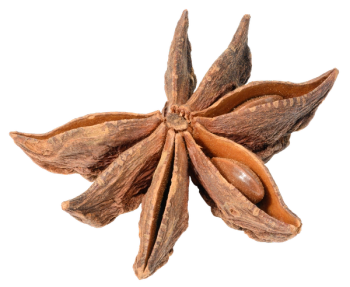
Fun fact! A cup of butternut squash contains more than 100% of the daily value of vitamin A.

Fun fact! A cup of butternut squash contains more than 100% of the daily value of vitamin A.

Fun fact! Raw apples eaten before and after garlic-rich foods may be an effective remedy for garlic breath.

Fun fact! The earliest known evidence of wine production was found in a cave in Armenia. Click to read more!

Fun fact! Because a small fraction of potassium is radioactive, and bananas are naturally high in potassium, the fruit delivers a very small dose of radiation. Click to read more!

Fun fact! Illinois grows the most pumpkins in the country with 17,600 acres. Click to read more!

Fun fact! Archaeological evidence indicates that lentils have been cultivated as far back as 8,000-10,000 years ago in Southwest Asia.

Fun fact! Cantaloupe does not ripen off the vine unlike other fruits.

Fun fact! When coffee gained popularity in Europe during the 17th century, it replaced beer and wine as the preferred morning beverage.

Hemp seeds are high in protein and are a good source of Vitamin E, several minerals, and essential fatty acids.

The flowers of the dragon fruit plant (Hylocereus undatus), a climbing cactus native to Mexico and Central America, bloom at night, pollinated by moths and bats.

Fun fact! Shallots have more calories than onion but are richer in fiber, vitamin B6, manganese, copper, folate, and vitamin C.

Fun fact! Bell peppers have a higher vitamin C content than citrus fruits. A 100 gram serving of a red bell pepper, for example, will offer more than 100% of the recommended daily allowance of vitamin C with 127 mg of vitamin C.

Napolean encouraged the European cultivation of sugar beets as a way to combat a British blockage on imported sugar from the West Indies. Click to read more!

Fun fact! Potato salad was first introduced to Europe by Spanish explorers returning from the New World in the 16th century. Click to read more!

Fun fact! Botany defines berries as fruit stemming from one flower with one ovary, making tomatoes, pomegranates, kiwis, and bananas berries but not strawberries or raspberries.

Fun fact! Besides drinking plenty of water to stay hydrated during heat waves, you can also eat food with water content higher than 80%. Click to learn what fruits and vegetables offer the best hydration.

Fun fact! Icelandic yogurt, called Skyr, is made with skim milk rather than whole milk like Greek yogurt. Click to read more!

Fun fact! Each point on the star anise pod is a carpel containing a single seed. Click to learn more!

Fun fact! Mexican and Italian oregano are not related at all. Click to read more!

Fun fact! Pistachios and other oil-bearing nuts or seeds have the potential to spontaneously combust. Click to read more!

Fun fact! English sailors became known as “Limeys” because of the lime juice rations provided to them by the Royal Navy. Click to read more!

Fun fact! Sweet basil has a sweeter, more peppery flavor, while Thai basil is bolder, with flavor reminiscent of licorice. Click to read more!

Fun fact! Honey can have an incredible shelf life due to its low moisture content and acidic pH. Click to learn more!

Fun fact! Tarragon has been used in traditional medicine as a remedy for toothaches. Click to read more.

Fun fact! Fenugreek seeds are used to make imitation maple syrup and flavoring.

Fun fact! During the Han-dynasty in 200 BCE, envoys from Java held cloves in their mouths to perfume their breath during audiences with the emperor.

Fun fact! About 46% of the world’s total fish supply comes from aquaculture, however, aquaculture accounts for more than 52% of total fishery products that are for human consumption.

Fun fact! 3.8 million tons of grapes go toward wine production while 115 thousand tons go toward juice production.

Fun fact! Sorghum originates from Northeastern Africa where it was first domesticated, but made its way to the Americas during the mid-18th century. Click to read more.

Fun fact! Nectarines will sometimes grow on a peach tree. Click to read more.